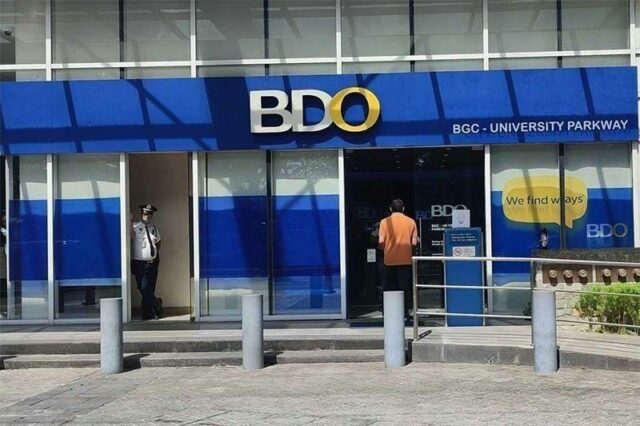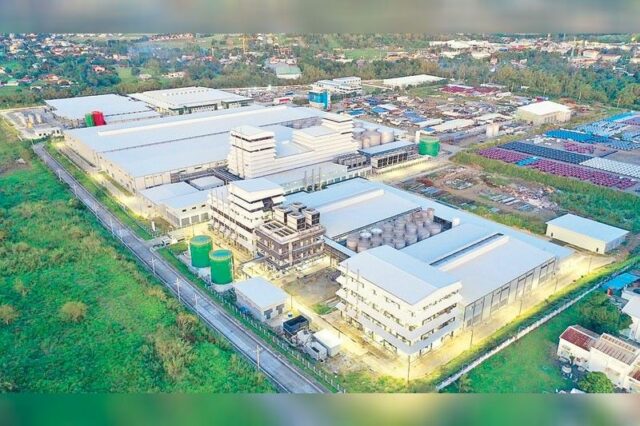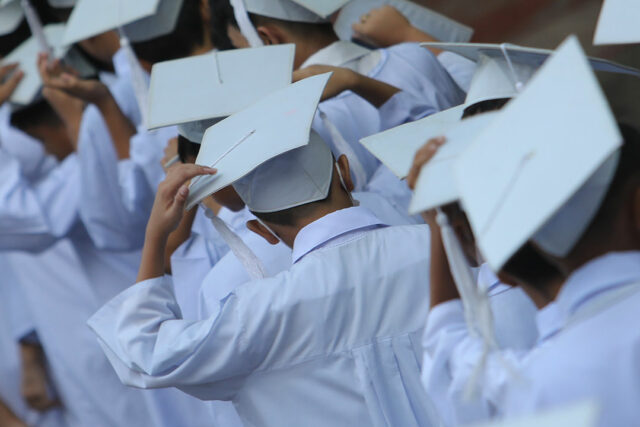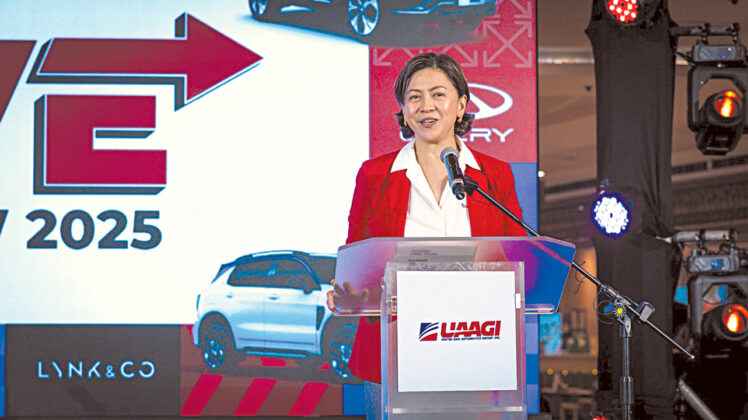The EdCom II Year Two Report entitled “Fixing the Foundations: A Matter of National Survival” persistently misreads the Philippine basic education situation. As stated in our previous column, “EdCom II Year One Report: Misreading the Philippine Education Situation” (March 11, 2024), we do not have a crisis in Philippine education. We have a crisis in Philippine public education. Philippine private education is doing fine.
This distinction between the performance of the private and public school is persistently lost in the EdCom (Congressional Commission on Education) Report. The most glaring example of this is in the EdCom Report on vouchers. The EdCom Report concludes that “The voucher system offers a possible, although limited solution for classroom decongestion.” The basis for this assertion is that once the existing vacant seats in the private schools estimated at 121,036 are filled, then the voucher alternative is exhausted.
But the voucher provision is based on the evidence provided quite fully in the report that private schools outperform public schools. Through the voucher system, the private school are better positioned to build classrooms cheaply and speedily, thus closing the estimated classroom gap of 165,000 classrooms without the government setting aside special funds for school buildings. By the way, in 2022, no new classrooms were constructed from new appropriations. Only 847 classrooms or 12% of the required number were slated to be completed by December 2024.
In the bill filed by Senator Sherwin Gatchalian, entitled “Government Assistance to Private Basic Education Act” which sought to extend the coverage of vouchers from Senior High School to Junior High School, Grade School, and Kindergarten, he noted that:
“Based on the study, accommodating an estimated 7.3 million excess learners in public schools over the next 30 years would cost the government a total of P3.7 trillion or P124 billion annually. Meanwhile, funding a voucher program over the same period would cost P2.6 trillion or P86 billion annually. Hence, through the E-GASTPE [Expanded Government Assistance to Students and Teachers in Private Education] Program, the government would save P1.1 trillion.”
Not only will the voucher program save substantial money for the government, the students availing of the voucher program will be grouped in optimal size classes, study in well-maintained classrooms (only 30% of public schools are well maintained), be adequately provided with learning materials (only 35% of public schools have adequate learning materials), taught by empowered teachers and administered by ever-present principals (only 45% of public schools have principals). Moreover, they will have learned more — private school students outperform public school students (43% vs. 17%) in the Philippine Science High School National Competitive Examination and yet only 12% of our students study in private schools.
Serious as this oversight is, it pales in comparison with the basic flaw of the report.
For this we have to use medical analogy. When a doctor examines a sick patient, he goes through a rigorous process of diagnosis (what ails the patient?), prognosis (what happens to the patient if we do nothing?) and prescription (how do we cure the patient?).
The diagnosis is the most crucial step as a wrong diagnosis will result in a wrong prescription which will not heal and may even cause harm to the patient.
The most common mistake of an incompetent doctor is to treat the symptoms rather than the disease, thus allowing the sickness to persist or to worsen. Moreover, when a doctor prescribes a profusion of medicines that is a sign that the doctor does not know what ails the patient.
Unfortunately, the entire report on basic public education focuses on the symptoms, i.e., congested classrooms, dilapidated school buildings, lack of teaching materials, mismatched teachers, lack of principals, rather than on the sickness itself. From this wrong diagnosis, EdCom then proceeds to prescribe prescription upon prescription to cure these symptoms.
To compound the error, the report relies on the patient — the bureaucrats of the Department of Education (DepEd) — to cure themselves, i.e., administer the medicine the report recommends. And yet, the report devotes only a minuscule portion on the management capabilities of the bureaucrats running the Central Office of DepEd and their findings are not encouraging.
“As for DepEd, in many respects, the agency continues to be a highly centralized bureaucracy. Moreover, years of centralized governance have fostered an extremely hierarchical culture wherein ‘no policy or practice in the lower levels of the hierarchy may change or take place unless there is an explicit DepEd memo from the Central Office that allows it’ (Bautista et al., 2010, p. 59). This diminishes the subsector’s capacity for innovation and slows responsiveness to actual needs and problems.”
Even if by some miracle, the bureaucrats of DepEd possess the outstanding management capabilities and the willingness to cure the symptoms, we still will not cure what ails the patient.
The sickness is this: DepEd regulates the private schools while other groups operate them. In the case of public schools, DepEd is both the regulator and operator. When asked why private schools perform better than public school, a private school president replied, “DepEd imposes strict standards on us but does not impose them upon itself.” DepEd the regulator does not impose on DepEd the operator strict standards such as optimal class sizes, well-maintained classrooms, well-stocked teaching materials, empowered teachers and ever present principals.
The prescription is simple. Remove the operating function from DepEd while retaining its regulatory authority over the public schools.
There is a precedent for this in higher education. There was a time when the then Department of Education, Culture and Sports, now Commission on Higher Education (CHED), was the regulator and sole operator of public colleges (with the exception of the University of the Philippines), which are now called State Universities and Colleges (SUCs). But several local governments felt that the needs of their citizens were not being met by these SUCs. So, through legislation or ordinances, they established pamantasans, now called Local Universities and Colleges (LUCs).
The LGUs operate them but CHED regulates them. EdCom reports that for the 10-year period from AY 2011 to AY 2021, while enrollment in SUCs grew by 72.9%, enrollment in LUCs grew by 168.0%. This is compelling evidence that the pamantasans can effectively operate the public grade schools and high schools.
The operations of the public elementary and high schools could be devolved to several entities.
For one, there is the Charter School system in the United States where public schools are managed under a Public-Private Partnership arrangement with private organizations, both profit and non-profit. Marginal public schools could be managed by Non-Government Organizations while viable public schools could be managed by the large private schools.
For another, there are the 137 pamantasans presently operating colleges. The public grade schools and high schools could be absorbed and made part of the pamantasan. This would place under one organization responsibility for the education of children in a community, from early childhood to college.
Lastly, again following the American model are the local school boards. In the United States, the public schools are operated by the county school boards. Our local school boards, who are already organized, determine the annual supplementary budgetary needs of public schools within their respective jurisdiction and then administer and manage their share of public educational institutions expenditures from the proceeds of the special levy on real property which constitutes their Special Education Fund. From this basic responsibility could be added the administration of the public elementary and high schools in their locality. As administrators, they would put the interests of their local community’s youth first. Through the policies they adopt, the school board members will ultimately be responsible for the success or failure of public education in their locality.
All three alternatives are not mutually exclusive and in fact should be adopted in combination.
EdCom proposes decentralization instead of devolution:
“A highly centralized top-down process persists in DepEd despite well-intentioned efforts to decentralize the agency’s structure through RA 9155. This outcome underscores the importance of careful and thoughtful design of decentralization reform. More importantly, Laguda et al. (2024) argue that ‘the Department of Education should spearhead efforts to fully realize the vision of shared governance and decentralization outlined in RA 9155, in view of the agency’s primary authority in basic education.’”
The idea behind decentralization is to separate the operating and regulating responsibility within DepEd with the Field Offices operating the public schools and the Central Office regulating the Field Offices. This would involve the Central Office ceding operational control to the Field Offices. Unfortunately, more than 50 years of bitter experience as fully documented all over the EdCom Report has shown that the bureaucratic overlords of the Central Office have never yielded and will never yield even an iota of authority to the peasants in the Field Offices.
DepEd cannot heal itself.
For this very reason, devolution can only occur through an act of Congress or by executive action by the President.
We close with the medical analogy. EdCom timidly prescribes bandages; regrettably what is required is radical surgery to save the patient, the public basic education system.
Dr. Victor S. Limlingan is a retired professor of AIM and a fellow of the Foundation for Economic Freedom. He is presently chairman of Cristina Research Foundation, a public policy adviser and Regina Capital Development Corp., a member of the Philippine Stock Exchange.






















